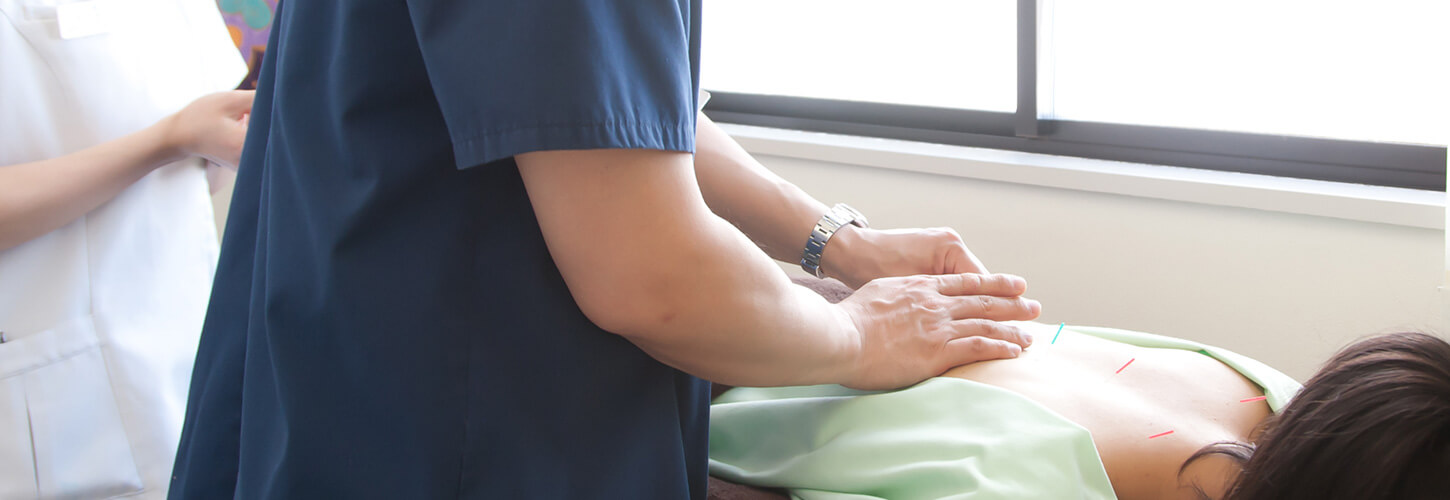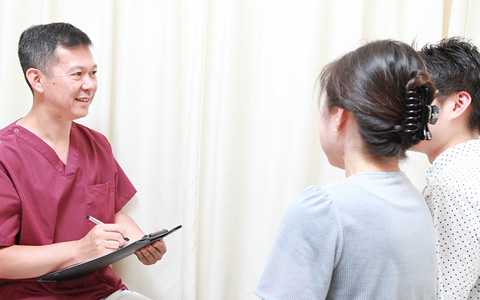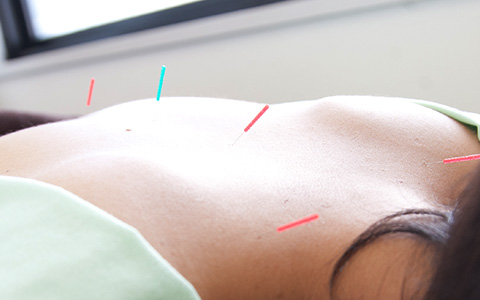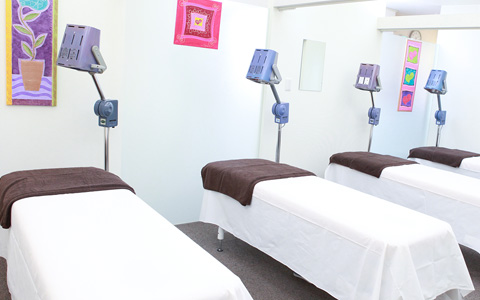A Pain in Your Neck
From stiffness to aches – pains in the neck are all too common. No wonder your neck is prone to injury from poor posture, years of abuse, wear and tear, and even stress. Joints can be pushed out of alignment, and other structures can be stretched, distorted or torn. Using specialized Traditional Chinese Medical (TCM) approaches, stiffness and instability, as well as joint, nerve, and other neck problems can be rectified. 
Know Your Neck
Your neck (cervical spine) is made up of the top seven vertebrae of your spine. A healthy neck is strong, flexible, and pain free, and the joints of these vertebrae are balanced and aligned with a natural curve. Your neck supports your head, protects your spinal cord and spinal nerves, and allows you to move your head in a variety of ways.
A Balanced Spine
Vertebrae and Discs
Your neck is made up of seven bones. Vertebrae are naturally aligned in a slight forward curve. The vertebrae have openings (Foramina) where the cervical nerves pass into the shoulders and arms. Discs are shock-absorbing pads of cartilage between the vertebrae. Healthy discs have a tough covering, a jelly-like interior, and a certain amount of “give” to adapt to various head and neck movements.
Joints
The joints in your neck allow you to move your head. Each vertebra joins with the next in two places (the facet joint and the Joints of Luschka), giving the spine great flexibility.
Nerves
Your neck is the channel connecting your brain with the nerves throughout your body. Spinal nerves branch off from the spinal cords and pass through the foramina. Each spinal nerve is “rooted” to the spinal cord with two small nerve roots.
Soft Tissue
Soft tissue includes muscle, tendons, and ligaments. Muscles work together to move and support your head. Tendons are tough tissues connecting muscle to bone. Ligaments are strong bands of tissue that stabilize and connect vertebrae. Trigger points are small, localized areas of pain and muscle spasm, a common symptom of many neck problems. Referred points may originate in the neck but can be felt nearby in the shoulders, arms, and hands or face. Each muscle has its own pattern of referred pain. 
Your Range of Motion
Your neck moves more than any other part of your spine, and can move in three basic ways. Each of these movements has its own range of motion – the amount of motion that is normally possible. Most neck problems affect your range of movement in some way. Flexion is dropping your head forward; extension is dropping your head backward. Their combined range of movement is about 90 degrees. Rotation is turning your head from side to side, and has a range of motion of about 180 degrees. Tilting your head from side to side has a range of motion of about 120 degrees.
COMMON NECK CONDITIONS
Neck Stiffness (hypo-mobility)
Can result from poor posture, muscle tension, stress, and fatigue. When your neck has too little mobility, you may experience stiffness, pain, muscle tension, and muscle tension headache. If you have a stiff neck, you may also have pain and muscle spasm, an aching, tired neck, headache, and referred pain to your face, shoulder, arm, or hand. Stiffness can come on suddenly, or can accumulate fatigue and stress over many years. Left untreated, stiffness may result in muscle tension headaches and eventually lead to the degeneration of your joints (osteoarthritis).
Instability (hyper-mobility)
If your neck problem is instability, you may be feeling pain, muscle spasm, and the curious sensation of a wobbly neck. Instability is often caused by a whiplash injury from a car accident. Your head is hurled in one direction, then another, causing the ligaments, muscles and tendons of your neck to stretch too far or tear. (You may have had the injury several years ago, with neck pain and looseness ever since.) Left untreated, instability can result in stiff scar tissue around your joints, referred pain, headache, and disc problems.
Degenerative Joint Disease
When a spinal joint becomes misaligned or injured, the vertebrae can’t move properly, discs can become compressed, and nerves may be irritated. As degeneration progresses, your discs lose their ability to cushion and your vertebrae can develop bone spurs. You may experience pain, stiffness, headaches and nagging neck aches (often worse in the mornings). Joint degeneration is often the result of too much stress on the joints caused by poor posture, repeated movements, or injury. Left untreated joint problems can begin to affect your nerves and spinal cord.
Nerve Root Problems
With nerve root problems, the spinal nerves that pass through the vertebrae in your neck can be stretched, inflamed or pinched. You may experience sharp pain shooting down your arm (often triggered by turning your head), or tingling, weakness, and numbness in your arms and hands. A nerve root problem can be caused by a variety of joint and disc problems, such as facet problems, a ruptured (herniated) disc, or severe osteoarthritis. Left untreated further neck or nerve problems can develop.

Fertility Treatment
Other Areas of Expertise
Acura Acupuncture Clinic Tokyo
(Shibuya St., Omotesando St., Aoyama)
Please contact us to make an appointment.
Office Hours (Closed on Tuesday)
10:00 – 21:00 (Mon / Wed)
9:30 – 21:00 (Thu)
9:30 – 19:00 (Fri)
9:30 – 18:00 (Sat, Sun, National Holidays)



